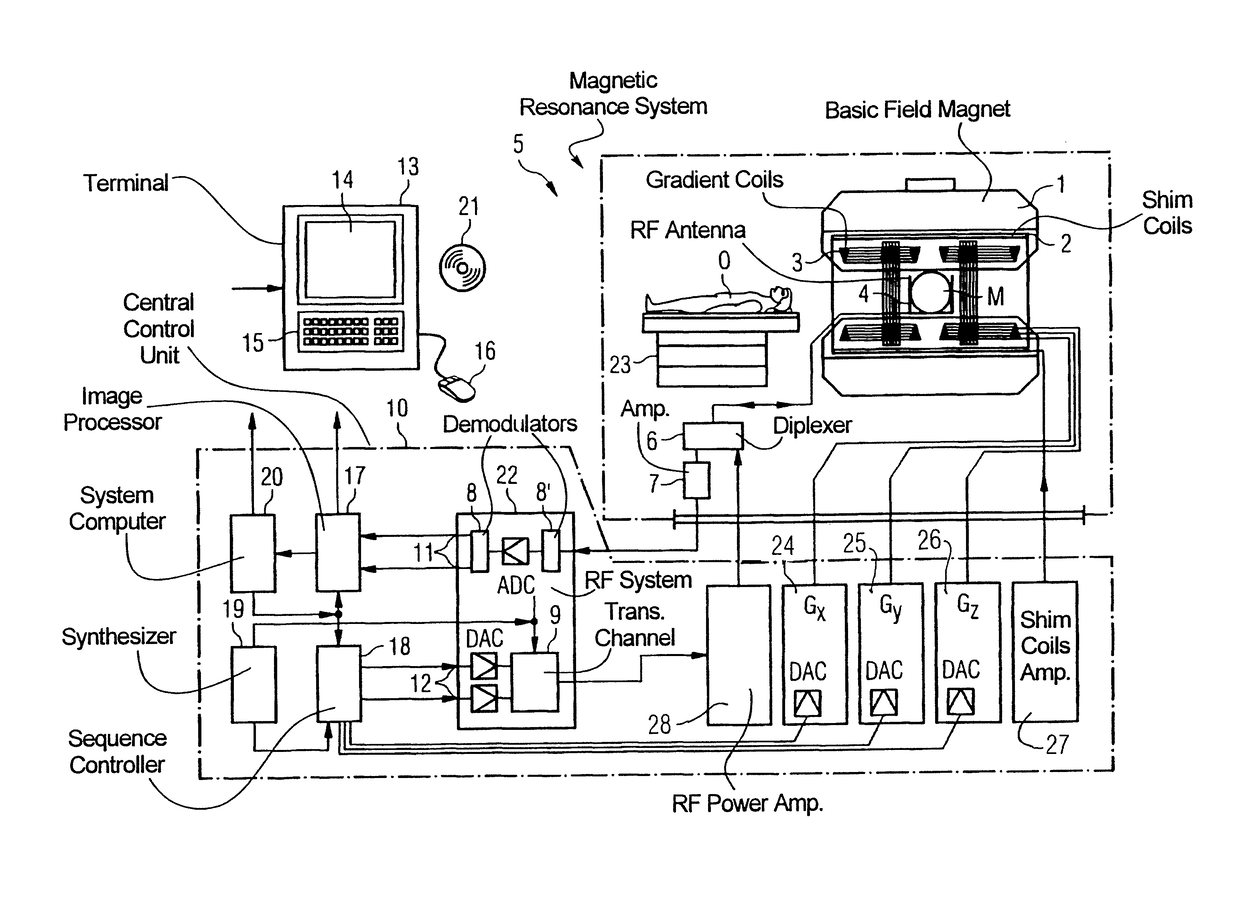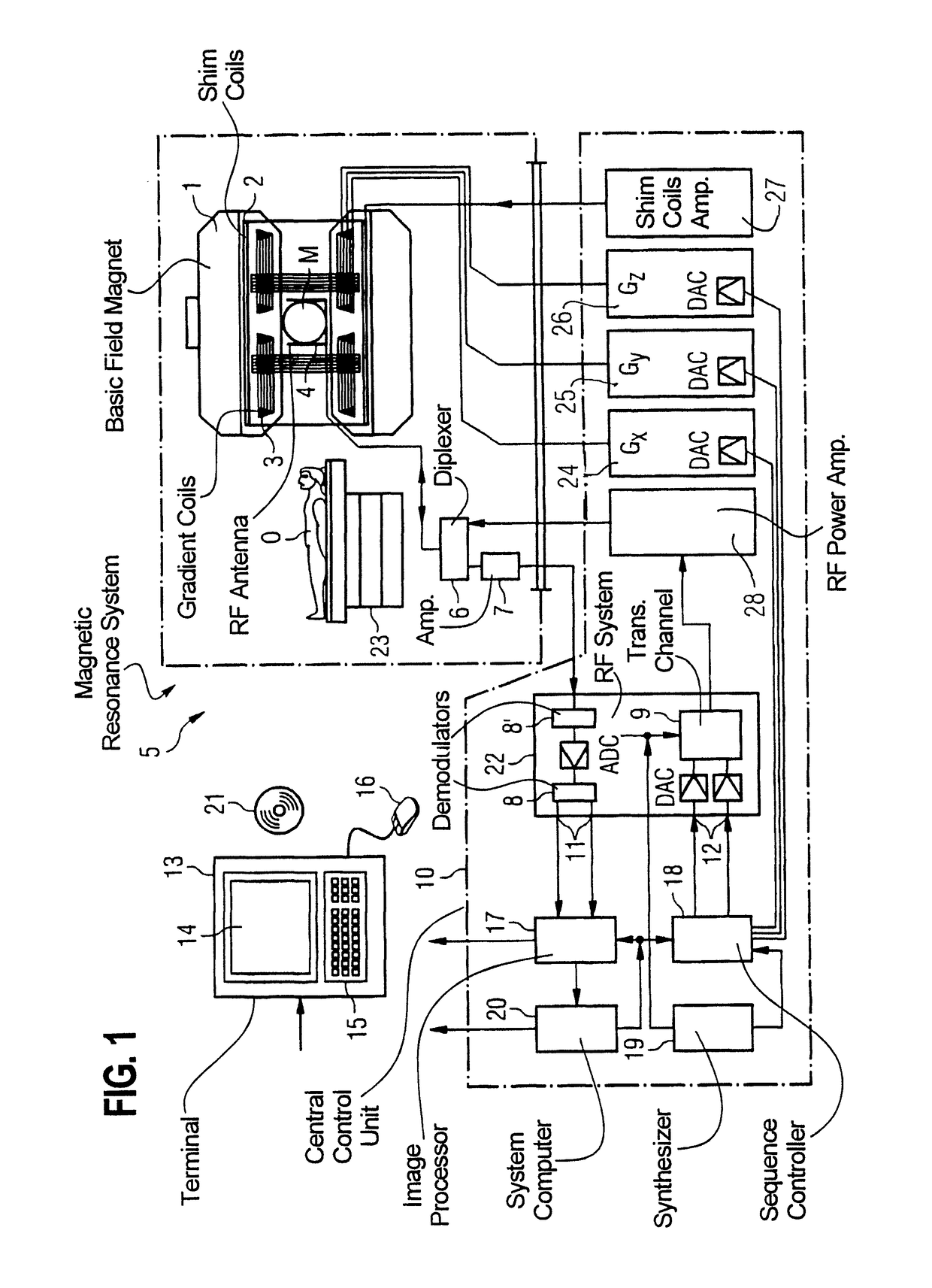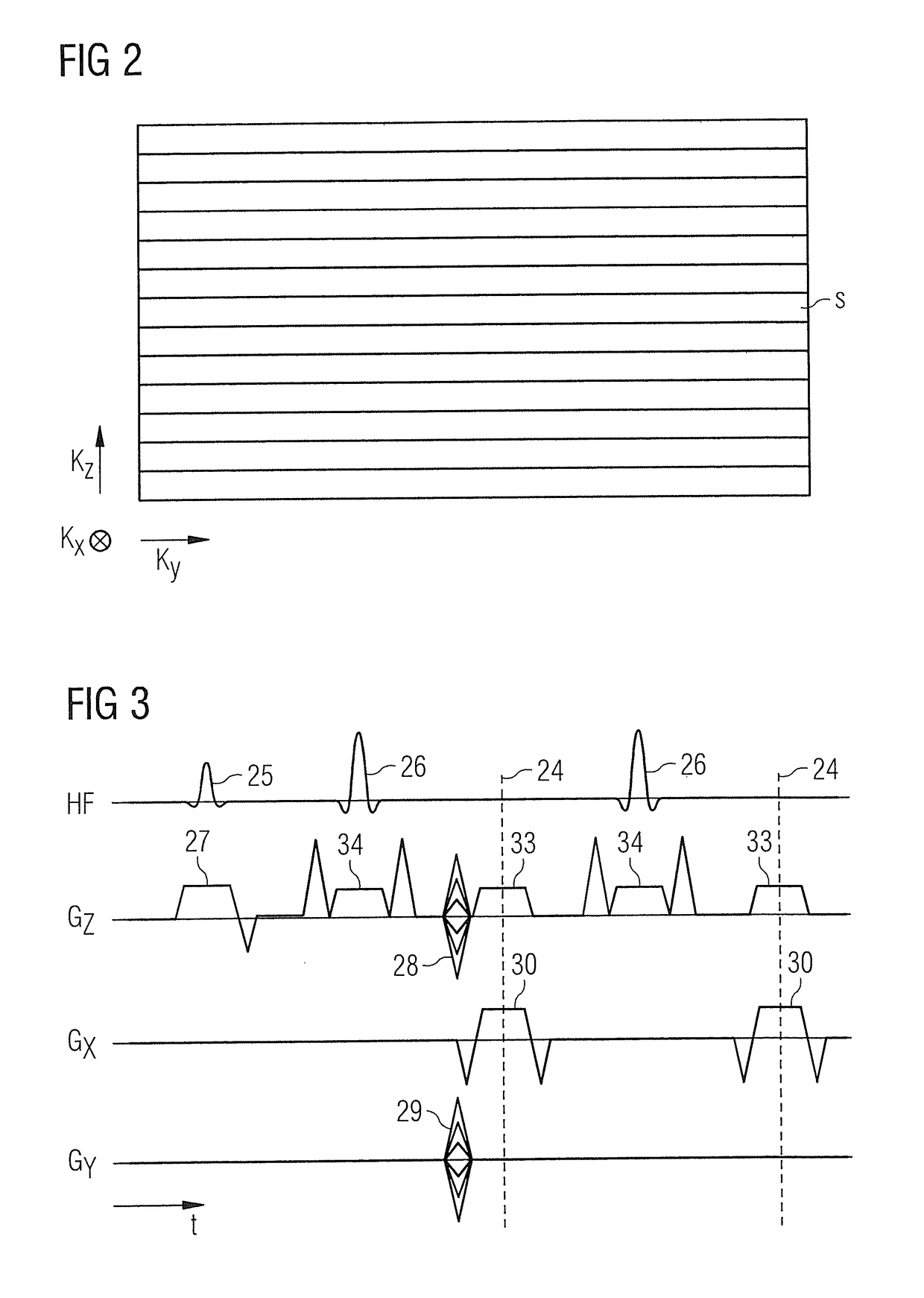Method and magnetic resonance system for detecting MR data
a magnetic resonance system and data detection technology, applied in the field of methods and magnetic resonance systems, can solve the problems of reducing the detection efficiency of mr data, and clearly too long for clinical protocols, so as to reduce the problem caused
- Summary
- Abstract
- Description
- Claims
- Application Information
AI Technical Summary
Benefits of technology
Problems solved by technology
Method used
Image
Examples
Embodiment Construction
[0038]FIG. 1 is a schematic diagram of a magnetic resonance system according to the invention 5 (of a magnetic resonance imaging device or computed tomography device). In this context, a basic field magnet 1 of the scanner generates a chronologically constant strong magnetic field for the polarization or alignment of the nuclear spins in an area to be examined of an object O, such as, for example, a part of a human body to be examined. The object O, lying on a table 23, is continuously pushed into the magnetic resonance system 5. The high degree of homogeneity required for the nuclear spin resonance measurement of the basic magnetic field is defined in a typically spherical measuring volume M through which the parts of the human body to be examined are continuously moved. To support the requirements for homogeneity and in particular to eliminate chronologically invariable influences, so-called shim plates made of ferromagnetic material are attached at a suitable location. Chronologi...
PUM
 Login to View More
Login to View More Abstract
Description
Claims
Application Information
 Login to View More
Login to View More - R&D
- Intellectual Property
- Life Sciences
- Materials
- Tech Scout
- Unparalleled Data Quality
- Higher Quality Content
- 60% Fewer Hallucinations
Browse by: Latest US Patents, China's latest patents, Technical Efficacy Thesaurus, Application Domain, Technology Topic, Popular Technical Reports.
© 2025 PatSnap. All rights reserved.Legal|Privacy policy|Modern Slavery Act Transparency Statement|Sitemap|About US| Contact US: help@patsnap.com



